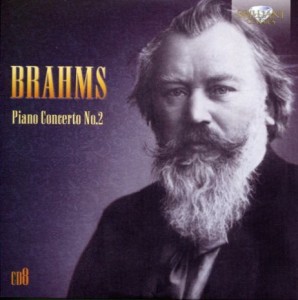 I prefer this piano concerto to Brahms’ first one.
I prefer this piano concerto to Brahms’ first one.
But that’s like saying I prefer Plymouth Gin to Beefeater Gin.
Both are terrific brands of gin. So picking one doesn’t slight the other a whole lot.
This piano concerto seems to be much more full, more dramatic (perhaps overly so, like the soundtrack to a 1940s film noir), and more complex.
However, “complex” also means quite busy. There are a lot of notes flying by on the piano, particularly in Movement II (“Allegro appassionato”). There are also melodic strains of something from one of Beethoven’s works in Movement II, one of his compositions that I number among my favorites. Because I’ve heard it often, and it’s a powerful melody, I picked up on it in Brahms’ piano concerto. I don’t recall off hand what it’s name is. But I hear that same melody in Brahms’ music.
Brahms CD 8 features the following musicians:
Cecile Ousset piano
Jurnjakob Timm cello
Gewandhausorchester Leipzig
Kurt Masur conductor
According to its entry on Wikipedia Piano Concerto No. 2 in B flat Op. 83:
is separated by a gap of 22 years from his first piano concerto. Brahms began work on the piece in 1878 and completed it in 1881 while in Pressbaum near Vienna. It is dedicated to his teacher, Eduard Marxsen. The premiere of the concerto was given in Budapest on November 9, 1881, with Brahms as soloist, and was an immediate success. He proceeded to perform the piece in many cities across Europe.
Brahms was 48 when he wrote this piano concerto.

